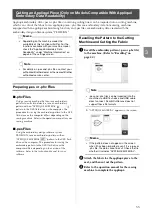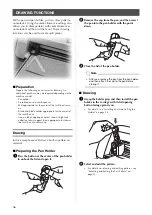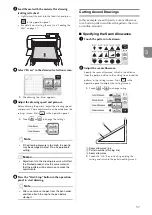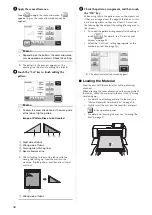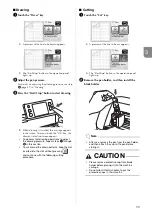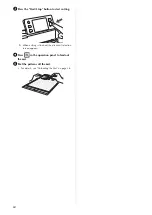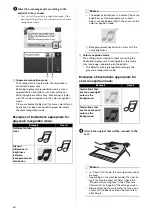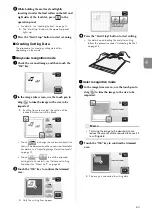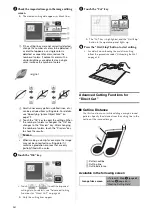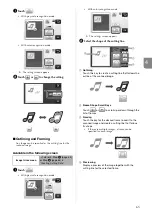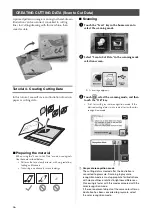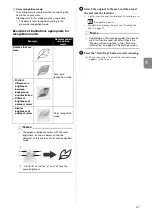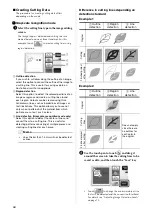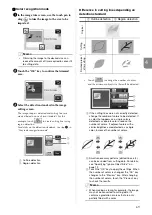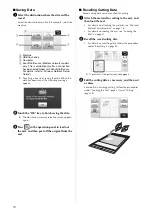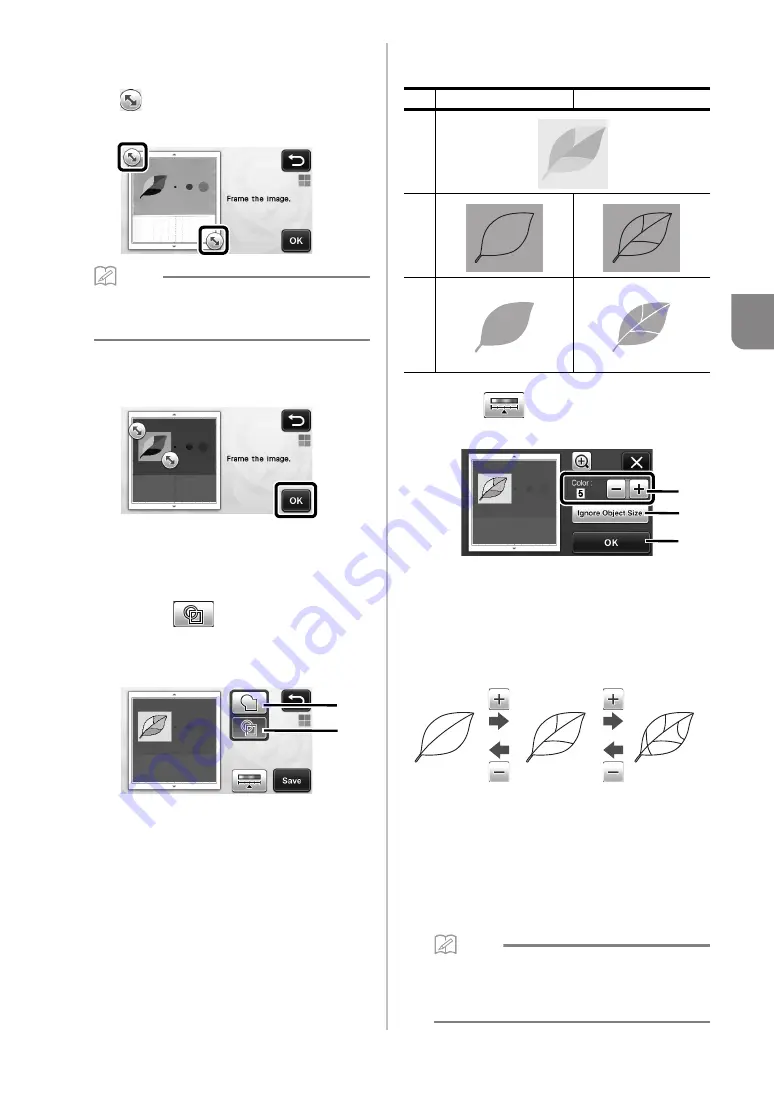
69
4
Color recognition mode
a
In the image trim screen, use the touch pen to
drag
to trim the image to the size to be
imported.
Memo
•
Trimming the image to the desired size can
reduce the amount of time required to convert it
to cutting data.
b
Touch the “OK” key to confirm the trimmed
area.
c
Select the detection standard in the image
editing screen.
The image shape is detected and cutting lines are
created based on one of two standards. For this
example, touch
to create cutting lines using
region detection.
For details on the detection standards, see step
in
a
Outline detection
b
Region detection
• Touch
to change the number of colors
and the minimum object size that will be detected.
a
If the cutting lines were not correctly detected,
change the number of colors to be detected. If
a color that appears as a single color is
detected as separate colors, reduce the
number of colors. If adjacent colors with a
similar brightness are detected as a single
color, increase the number of colors.
b
Small unnecessary patterns (dotted lines, etc.)
can be excluded from cutting data. For details,
see “Specifying “Ignore Object Size”” on
page 72.
c
Touch the “OK” key to apply the settings. When
the number of colors is changed, the “OK” key
changes to the “Preview” key. After changing
the number of colors, touch the “Preview” key
to check the results.
Memo
• When making a stamp, for example, the image
may not be converted to cutting data if it
contains a gradation or areas that are only
partially filled with a color.
b
a
Difference in cutting lines depending on
detection standard
a
Outline detection
b
Region detection
Ori
g
in
al
Cu
tt
in
g
lin
e
s
F
ini
s
h
ed
p
ro
ject
aft
e
r c
u
tti
n
g
b
a
c

